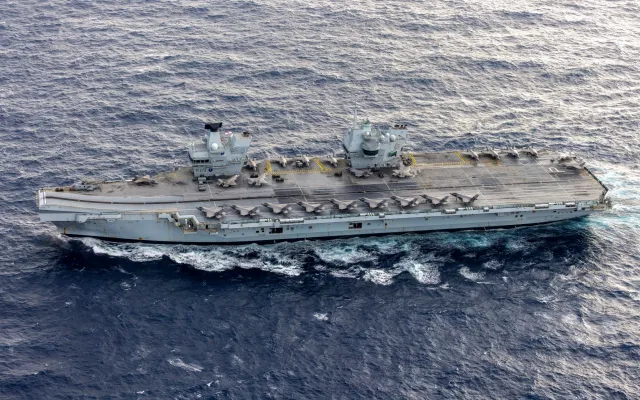
NATO concluded a large-scale naval war game in the Mediterranean Sea on Tuesday, featuring British and Italian aircraft carriers and their F-35B stealth fighter jets, after the United States recently redeployed its own carriers from Europe to the Caribbean Sea.
The allied drill, code-named Neptune Strike 25-4, kicked off on November 19 with the participation of nine nations and aimed to demonstrate the alliance’s strength, seamless interoperability and credible deterrence at sea, the NATO Maritime Command said.
Why It Matters
U.S. aircraft carriers—the world’s largest fleet, with 11 nuclear-powered vessels—are a visible symbol of Washington’s security commitment to NATO allies when deployed to Europe, particularly following Russia’s full-scale invasion of Ukraine in February 2022.
As part of efforts to expand the U.S. force buildup in the Caribbean Sea to target drug-trafficking networks, the Pentagon repositioned the aircraft carrier USS Gerald R. Ford from the Mediterranean in late October. The warship arrived near Venezuela last week.
Meanwhile, major European navies—namely the United Kingdom, France and Italy—operate and deploy their aircraft carriers under a joint initiative to project NATO naval power and maintain its presence within and beyond Europe, notably in the Indo-Pacific.
What To Know
In a social media post on Tuesday, NATO Maritime Command said more than 30 aircraft and two aircraft carriers were operating under the alliance’s command during Neptune Strike 25-4. The exercise also featured six surface vessels and submarines.
The aircraft carriers were the Royal Navy’s HMS Prince of Wales and the Italian ITS Cavour. While the Gerald R. Ford did not take part in the drill, the U.S. military was represented by a bomber task force, Naval Striking and Support Forces NATO said.
According to photos released by the British Defense Ministry, the Prince of Wales and the Cavour sailed in formation, while a group of carrier-based fighter jets—including British and Italian F-35Bs and Italian AV-8Bs—flew over both vessels on Saturday.
During the allied war game, the Prince of Wales had 24 British and Italian F-35B jets embarked on its flight deck, marking the largest fifth-generation carrier air wing ever deployed on the aircraft carrier, the British Defense Ministry said in a photo caption.
The Royal Navy said the exercise, which tested the ability to strike maritime targets, included carrier-based air missions, amphibious landings and anti-submarine warfare to prepare NATO to ensure freedom of navigation and secure maritime choke-points.
The British aircraft carrier is set to conclude an eight-month overseas deployment that began in April, which has encompassed the Mediterranean, Middle East, Southeast Asia, Australia and Japan, as well as a transit through the South China Sea.

What People Are Saying
NATO Maritime Command said: “The operational power of the flight decks of ITS Cavour and HMS Prince of Wales on Neptune Strike 25.4. NATO keeps sea lanes secure 24/7, integrating advanced maritime strike forces to maintain strong deterrence. Neptune Strike shows Allied unity, precision & readiness at sea and in the air.”
Naval Striking and Support Forces NATO said: “Italian forces lead from the deck of aircraft carrier ITS Cavour as UK F-35B Lightning II jets join the skies during Neptune Strike 25-4, showcasing seamless NATO interoperability and a united front of deterrence.”
British Defense Secretary John Healey said: “We are in a new era of threat that demands a new era for defense. Our strength comes from hard power and strong alliances, so it is fitting to mark this moment alongside one of our closest NATO allies in Italy. Their F-35s have been operating from the carrier to demonstrate the deep partnership between our militaries.”
What Happens Next
It remains to be seen whether the U.S. Navy will soon dispatch another aircraft carrier to fill its naval power gap in Europe following the redeployment of the Gerald R. Ford.
